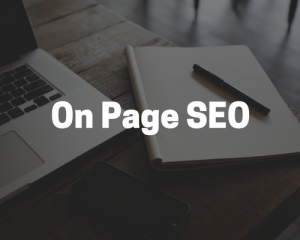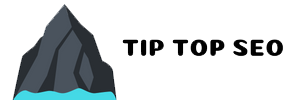On Page Optimization
The Ultimate On Page SEO Checklist
Understanding the fundamentals of on page SEO are a crucial factor for determining where your website will rank.
Trying to optimize your website without paying attention to the on page optimization is like trying to win a drag race without a car.
80% of the total battle will be your on page optimization and it can be the difference between your website ranking number 1 or number 2. We’ll be covering the most important on page ranking factors so that you have a checklist which you can refer back to.

Let’s Start Our On Page Optimization Checklist
Titles
Having your keyword in the title is a must. The title tells Google what your page is about. It is something that is easy to implement and can be altered in 2 minutes.

You can change your titles based on how well that specific page is doing. If you don’t want to over optimize, you can first set a conservative title and alter it later if you need to be more aggressive with your main keyword.
Ideally, you’ll want to start off your titles with your main keyword. However, this doesn’t apply to all cases as your website might be an EMD.
An EMD stands for exact match domain.
Let’s say your website is called buycatfoodonline.com, and you write an article about the best places to buy cat food online.
In this case, you may not want to start off with “buy cat food online” at the beginning of your title. You could sprinkle it in instead, like so; “Best Websites To Buy Cat Food Online”.
This way, you still have your main keyword in the title, but it’s not as aggressive because the keyword goes from “Buy Cat Food Online” to “Best Websites To Buy Cat Food Online”.
You can test this title and see where your website lands. If you need a bit more of a push, then you can always alter your title to be more aggressive.
It’s always better to start off under optimized then build up to perfectly optimized, rather than starting off over optimized and going backwards.
Your URL’s
In order to maximise your titles effectiveness, you’ll also want your main keyword in your url.
You NEED to have your keyword in the URL.
Having your keyword in the URL is one of the biggest ranking factors that Google looks at.
Once again, if your main keyword is “Buy Cat Food Online” and your domain name is buycatfoodonline.com, don’t target your keyword again.
This would look something like this: buycatfoodonline.com/buy-cat-food-online
This URL is just asking for an over optimization penalty, which is exactly why we discussed how it can be easier to rank EMD’s but it can also be very easy to over optimize in our SEO 101 article.
But let’s say you sell cat food online and your domain name is WhiskersTreats.com. In this case it would be okay to include your main keyword.
This is what it would look like: WhiskersTreats.com/buy-cat-food-online
Notice how this time you only have your main keyword once in the URL.
After you’ve created your title and altered your URL of optimization perfection, what are the next steps to optimizing your on page?

Before we get onto some more steps on how you can optimize you on page, just note that your title on the page in most cases is going to be in a h1 tag. This is a way to put forward what the page is about, everything on the page should build off the h1 tagged title.
h-1 The next step to correct on page optimization is the images/videos or any other kind of media that you use on the page. h-1
Multimedia on your page will boost engagement on the page and can also make the information more digestible.
Is Your Website Mobile Friendly?
Another critical on page ranking factor is how responsive the design of your site is. Your website needs to be mobile friendly otherwise you could end up getting completely ignored by Google’s algorithm.
Having a mobile friendly website ensures that mobile users can navigate around your site with ease. Great user experience is what Google is looking for.
Outbound Authority Links
Outbound links to authority websites are also a must. It shows that you’re genuinely trying to provide as much information as possible and shows that the content is actually helpful. Having outbound links to authority sites who dive deeper into a certain word or phrase you mentioned will help your visitors have a better understanding of what you’re talking about in the article.
You can see examples of us using outbound links in this article. We used it on the phrase “exact match domain” in order to provide more in depth information for our readers (you).

Internal Linking
Whilst we’re on the subject of linking, you also want to make sure that your content links to other relevant content on your website.
This is another great way to give your visitors more information yet still keep them on your website.
Internal linking the right way will contribute to the relevance of the page that you’re linking to.
Try not to overdo this as you could end up over optimizing the anchor text portfolio of your site.
Website Speed
Another way to increase your user experience is to increase the speed of your website.
If your website loads too slowly, people will get impatient and hit the back button. This tells Google that your content was either not relevant or that the user experience was not up to a good standard. As a result of this, Google will demote your rankings to ensure that other users don’t have the same bad experience.
The Power of Synonyms
Throughout your content you’ll also want to sprinkle in some LSI keywords. LSI keywords are keywords that are closely related to your main keyword (synonyms).
LSI keywords can help increase the relevance of a page and so can optimizing your images. You want to make sure that the title of your image is either your exact keyword or an LSI version of your keyword. This will also boost the relevance of your page.
Social Sharing Buttons
Last but not least you want to make sure that you have social sharing buttons available on your page. These buttons will increase the chances of one of your visitors sharing your content if they found in to be valuable.
This on page SEO checklist is something which you can refer back to time and time again in order to make sure you’ve optimized your on page to the best possible standard.
This is the way we do our SEO for our clients and for ourselves.
If you need help optimizing your website, feel free to reach out to us for more information. We hope you enjoyed our article and wish you the best of luck with your on page optimization.
